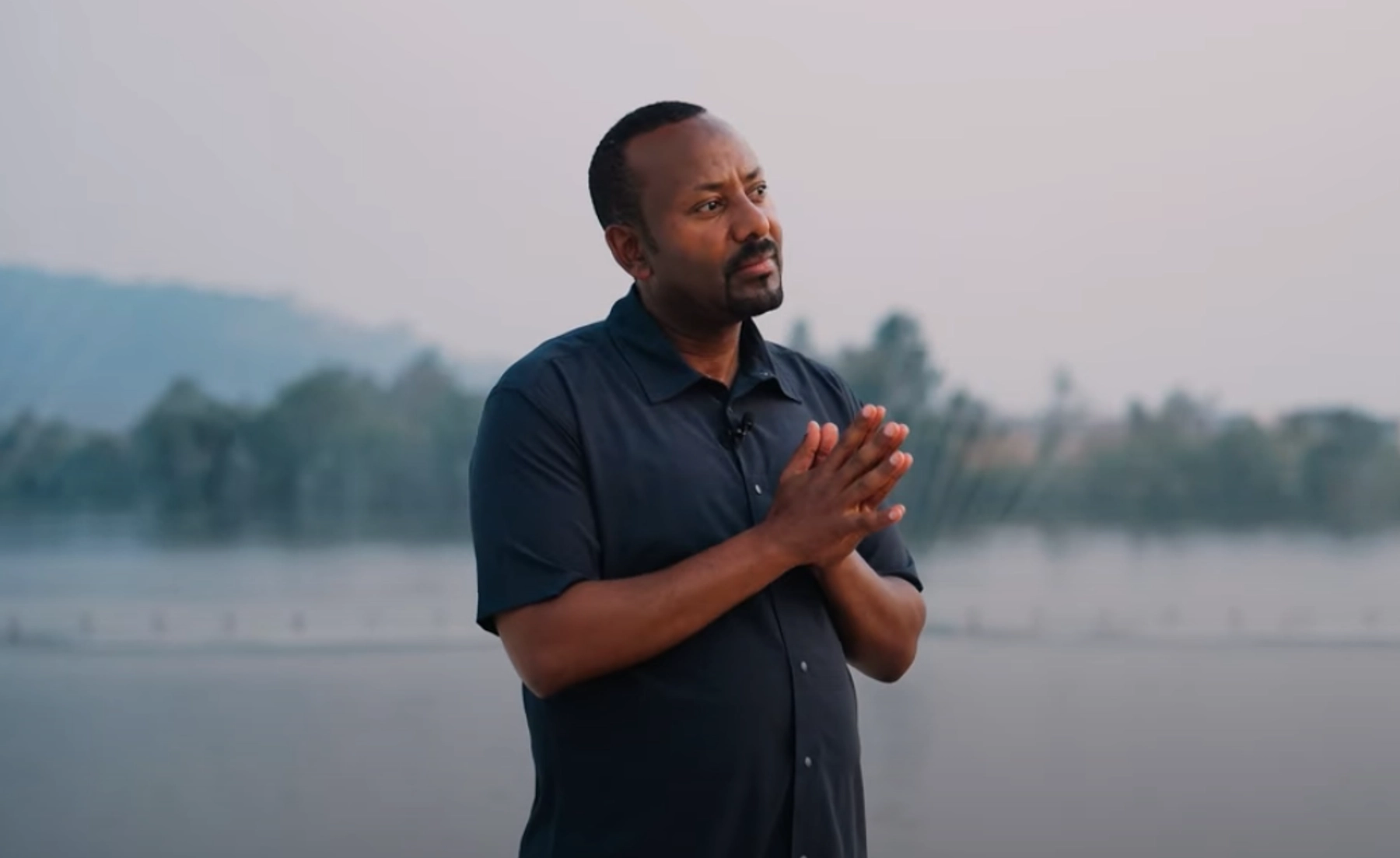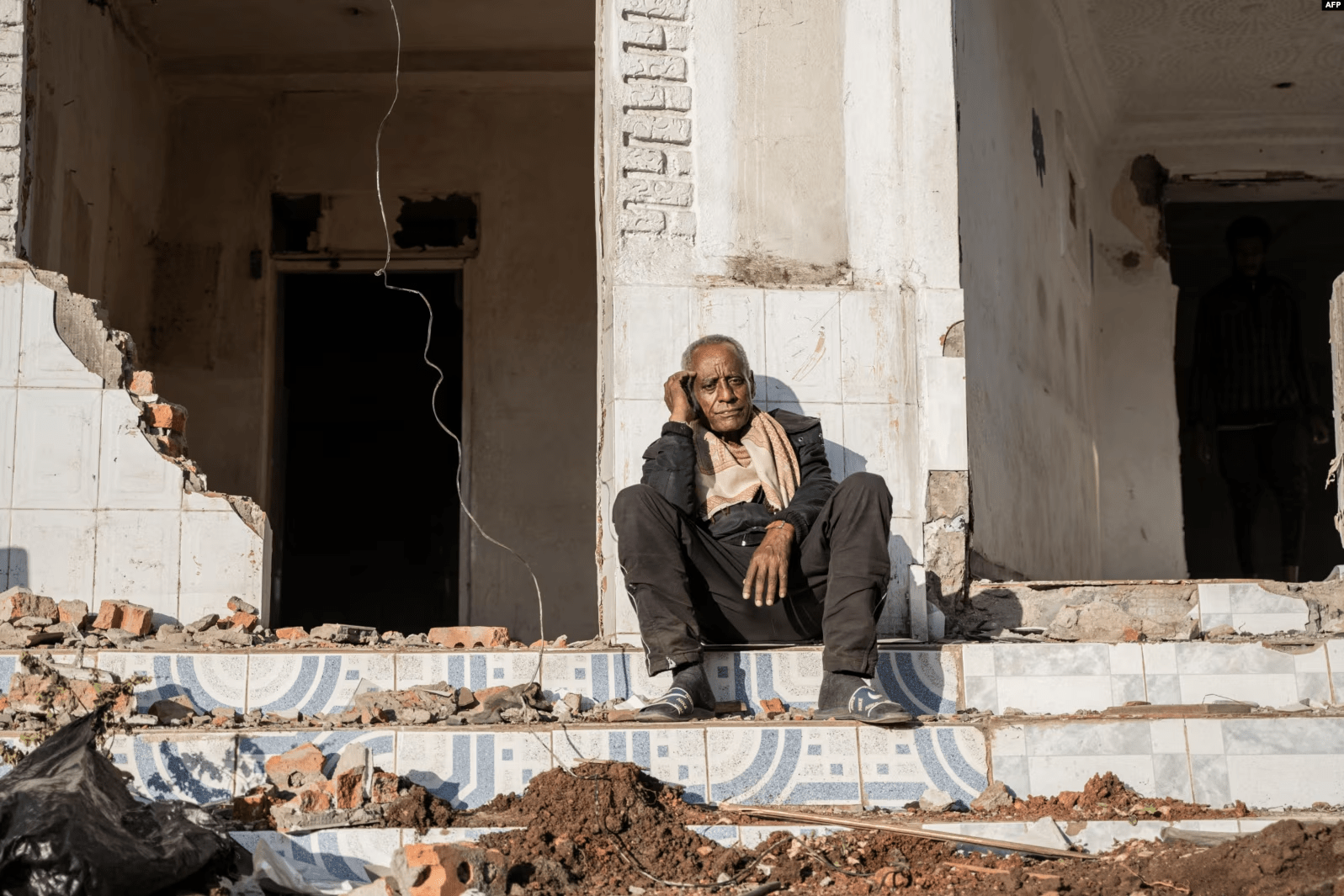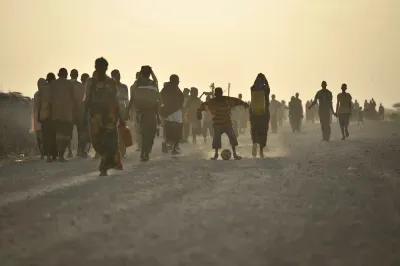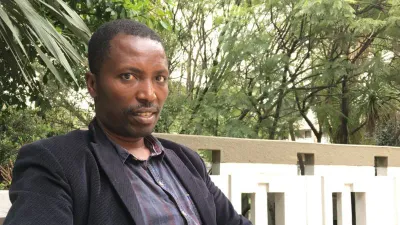Authoritarian Urbanism in Ethiopia: Urban Redesigning as Political Spectacle

Prime Minister Abiy Ahmed stands in front of an artificial lake built as part of a city beautification project in Jimma. Photo: EBC.
On January 25, 2025, Prime Minister Abiy Ahmed made a shocking statement regarding his urban reengineering policy, commonly known as the “Corridor Project,” in Jimma, Southwestern Oromia—his presumed political stronghold.
In a promotional video aired on the government-owned Ethiopian Broadcasting Corporation (EBC), the Premier revealed that various urban redesign projects in Jimma involved demolishing several mosques, 15,000 houses and exhuming more than a thousand graves.
“What surprised me the most in Jimma,” PM Abiy stated, “is that the people didn’t ask us for any compensation. What they asked instead was to let our ideas take shape and see the outcome.”
“If you look at many cities in the United States of America, they were built by the labor and blood of Black Africans. They were not built easily,” Prime Minister Abiy further noted.
“We, too, should be serious about creating a better future,” he concluded.
Key points in Abiy’s statement are the huge number of houses demolished without compensation and his reference to the establishment of US cities through slave labor, which he wants to emulate in Ethiopia. By emphasizing the “willingness and commitment” of people in Jimma to embrace his urban reengineering policy, the PM is continuing his authoritarian approach to pursue the high-modernist development narrative he embarked on since his rise to power in 2018.
The Prime Minister proudly speaks of demolishing tens of thousands of houses and bulldozing graveyards and religious centers without any compensation as part of his prosperity. However, the absence of compensation claims is not because people support urban reengineering but rather due to the fear of repercussions from the state. A recent report shows that “despite tens of thousands of houses and businesses being destroyed, with, as noted, short notice and often without compensation, hardly any protests have been voiced.” The state of fear created through repression is portrayed as though people are aligned with the regime’s urban projects and its “prosperity” discourse.
Abiy’s reference to slave labor in the making of US cities signals two strong messages: Firstly, it highlights the government’s determination to pursue its futuristic development plans even if it requires the exercise of violence. Secondly, it seeks to mask the current sufferings of citizens and legitimize their sacrifice for an imaginary future. He once said, “We shall make Ambo like New York,” and now added that “Jimma will be like Rome”. These performative speeches and showcases of urban projects have political ramifications as spectacles.
Urban spectacles are increasingly entangled with authoritarian and kleptocratic state-building projects and enhance consolidation of power by displaying the vision and imaginations of authoritarian regimes.
Often described as the politics of spectacle, authoritarian urbanism entails top-down and centralized planning and reconfiguration of urban spaces. Spectacles carry the political and ideological imaginations of urban designers or governments and are often exhibited through performative staging and construction of symbolic statues, buildings, parks, and public squares that signify the past or future aspirations of the actors.
Urban Spectacles under Abiy
Abiy started his urban reengineering project and politics of spectacle immediately after assuming power in 2018. His renovation of the imperial palace and the installation of the statues of emperors Menelik II and Haile Selassie I were among the early attempts he made to install imperial visions and authoritarian rule. These were followed by purse-draining projects such as Unity and Entoto Parks, and more recently a luxurious Forest (“Chaka”) Palace, and his corridor projects in the capital city and major cities across the country. Centrally planned, top-down, and authoritarian in nature, these projects illustrate the core of Abiy’s “prosperity” narrative and high-modernist statecraft.
Economically non-productive and socially exclusionist, these extravagant projects are being undertaken in a country where over 20 million people need food assistance and over four million people are internally displaced.

Urban spectacles under Abiy Ahmed aim to consolidate his authoritarian power through material, discursive, and economic means, as well as the political significance and representation of these projects. For the sake of clarity, I summarize the manifestations and intended purposes of urban spectacles in five categories.
First, urban reengineering, such as the Riverside and Entoto Park projects feeds into the global green cities narrative and buys the regime leverage in the form of environmental diplomacy. Successive Ethiopian regimes since the mid-20th century have used conservation of the environment as one of their main diplomatic strategies to secure international funding. The establishment of national parks and protected areas during the imperial regime, biosphere reserves under the EPRDF, and urban parks and eco-lodges today are aimed at fostering diplomatic leverage for foreign aid, rather than prioritizing environmental conservation itself.
Second, the urban redesign began from the palace, moved to different corners of Finfinne/Addis Ababa, and now regions are forced to adopt it in their respective towns. I consider this a form of high-modernist statecraft in which Abiy’s prosperity narrative is violently translated into practice as he acknowledged the demolition of tens of thousands of houses and thousands of mosques in a single town. High modernism is a belief in centralized and elite-driven development planning and intervention that disregards local realities. It uses imaginary visions that are often unrealistic and abstract but co-opt people toward “promised salvation/prosperity.” Throughout history, high-modernist development projects such as the Ujama program in Tanzania, the Collectivization in the USSR, the Villagization program under the military regime in Ethiopia, and mega-urban projects in different parts of the world were used in consolidating the power of authoritarian regimes and legitimizing their rule masked under the narrative of development. Abiy’s urban redesigning projects are no different.
Third, luxury urban spaces, amusement parks, and eco-lodges aim at appeasing the few urban elites as a strategy for creating urban political subjects. It is not the poor who can enjoy these parks; rather an emerging elite class, particularly those who are accumulating wealth following the recent political transition. For Abiy, this emerging elite class can easily be aligned with this narrative of urban development.
Abiy’s focus appears to be on creating urban political subjects who subscribe to the “prosperity” narrative. This is evident in his complete neglect of the suffering of the rural population, a significant section of the country, who lack basic needs such as health, water, roads, schools, food, and more.
Fourth, the extravagant and flashy urban projects mask the political and economic crises in the country. For uninformed foreign visitors and blind supporters of the regime, the entire country is viewed through the lens of Addis Ababa, even though the situation is quite different just ten kilometers from the city center. In rural areas and small towns, citizens struggle with deteriorating security. Infrastructure services—such as schools, health centers, and roads—are largely nonfunctional. Farmers are unable to work their land, businesspeople cannot conduct their operations, and life has become miserable for millions. Public servants, including university lecturers and professors, are unable to make ends meet on their salaries.
Fifth, these projects are instruments of wealth accumulation by dispossession and reinforcement of multidimensional corruption. This is evident in the practice of renting out or leasing spaces generated by the demolition of houses and other properties to individuals closely aligned with the Prosperity Party. It includes awarding contracts exclusively to companies with ties to high-level government officials in their respective regions or at the federal level.
In conclusion, the urban project signifies Abiy’s high-modernist statecraft within the prosperity narrative and masks the complex interplay of political chaos, economic crises, and security challenges in the country. A serious question that critical observers of Ethiopian politics and economy should ask is whether fancy urban projects are supposed to be the priority of a government in a country plagued by serious economic and security challenges. While peace is key for any development, a meaningful one requires carefully planned, contextually appropriate, and feasible projects rather than politically expedient spectacles. Furthermore, these ill-designed urban projects exacerbate existing socio-economic crises faced by the urban poor, even as they satisfy the aesthetic desires of Ethiopia’s emerging elite class.
We need your support
We trust you found something of value in this article. If so, we kindly ask you to consider helping Curate Oromia continue its work.
If you believe in the importance of independent voices and honest reporting, we invite you to support our efforts through our GoFundMe campaign.
Every contribution, however small, goes directly to our writers and the expansion of our reach.
Thank you for your support.



